The Economics and Statistics Division maintains archives of previous publications for accountability purposes, but makes no updates to keep these documents current with the latest data revisions from Statistics Canada. As a result, information in older documents may not be accurate. Please exercise caution when referring to older documents. For the latest information and historical data, please contact the individual listed to the right.
<--- Return to Archive
For additional information relating to this article, please contact:
December 05, 2023CHILD CARE, 2023 Statistics Canada has released data from the Survey of Early Learning and Child Care Arrangements (SELCCA) that provides a snapshot of early child care usage. The survey was conducted in the first half of 2023 among households with children aged 0 to 5 years of age, excluding children living in institutions or on reserve. Early learning and child care arrangements include any form of child care, formal or informal, by someone other than their parent or guardian, but the survey excluded occasional babysitting and kindergarten. Data for Canada reported below does not include the territories.
The participation of children (aged 0 to 5 years) in early learning and child care varied at the provincial level with higher rates in Quebec and the Maritimes than the other provinces. In Nova Scotia, 56.1% of children were in child care, which was about the same as the national share (56.2%). Child care usage was highest in Québec and lowest in Ontario. Ontario was the only province in which less than half of children aged 0-5 were in child care.
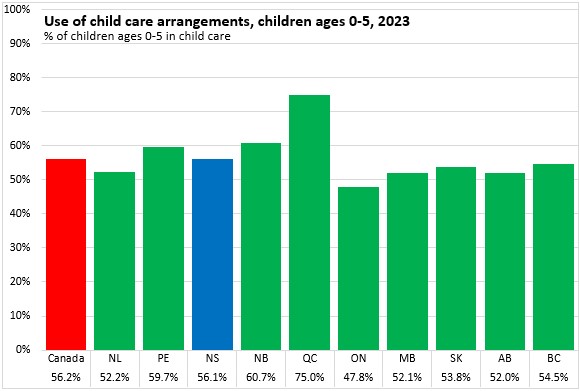
The participation of children (aged 0 to 5 years) in child care improved from 2022 to 2023 for all provinces except Newfoundland and Labrador. Only in Manitoba and Saskatchewan has the portion of children using child care risen back to pre-pandemic (2019) levels.
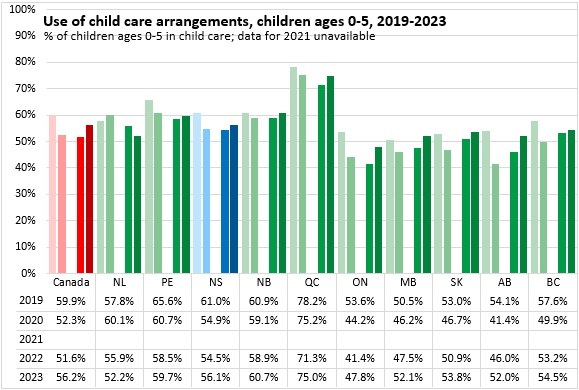
In Nova Scotia, there were 29,000 children aged 0-5 in child care, up by 1,300 (+4.7%) from 2022. The number of children using child care in Nova Scotia remains over 2,000 below their pre-pandemic levels.
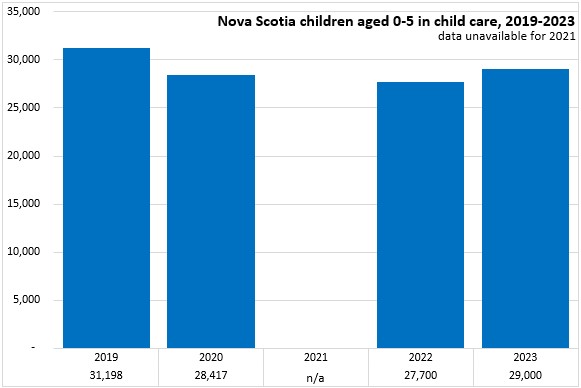
The most common types of child care arrangement in all provinces were formal daycare, preschool or childcare centers. Care by relatives was the second most common type of child care in all provinces except Quebec, where family child care homes accounted for a larger share. Nova Scotia child care types were similar to national types with daycare/preschool (54.8%), care by relatives (25.1%), family child care home (17.0%), before/after school programs (11.7%) accounting for majority of arrangements. Smaller shares of Nova Scotia children were cared for by non-relatives in the child’s home (4.1%) or through other arrangements (3.3%).
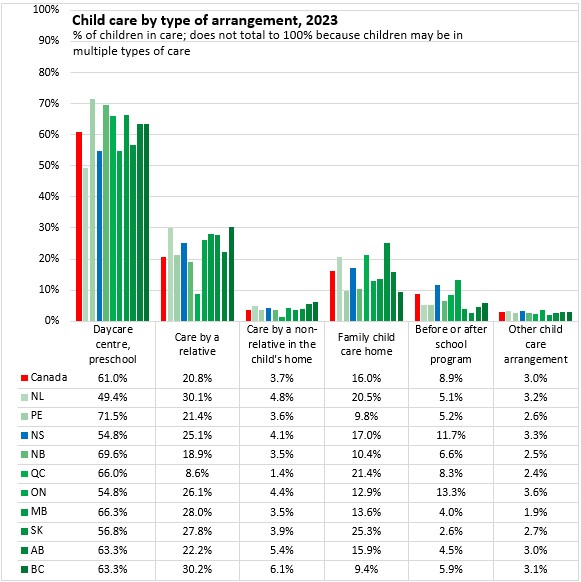
The cost of full-time child care in Nova Scotia averaged $5,512 per year - across all ages of children and types of care. This was below the national average ($6,529), but above average costs in all other Atlantic provinces as well as in Manitoba and Saskatchewan. Child care costs were notably higher in Ontario, Alberta and British Columbia.
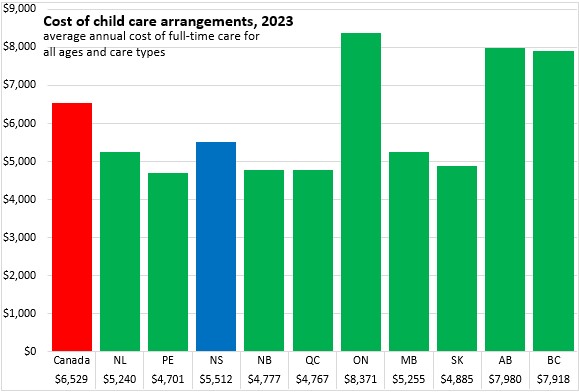
Average annual cost of full-time child care declined in all provinces last year. Nova Scotia's average annual cost of full time child care was down 28.4% in 2023 - a steeper decline than the national average (-16.2%). Saskatchewan and New Brunswick reported the steepest declines in child care costs (followed by Nova Scotia). Québec reported the least decline in percentage terms, though Québec's average child care costs have typically been lower than in other provinces.
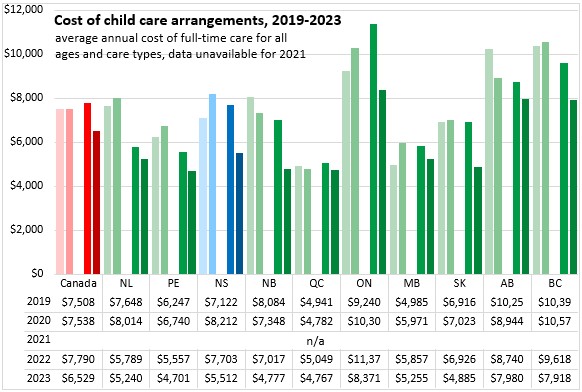
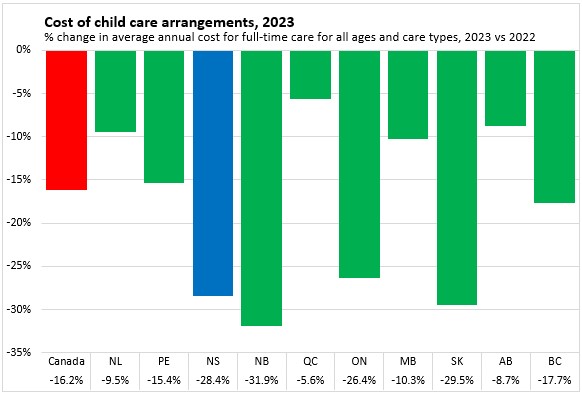
The reasons for selecting a child care arrangement were similar across the provinces. Location was the most widely-cited reason for selection of child care provider, followed by a provider perceived as warm, trustworthy and nuturing. Hours of operation, affordable cost, and qualifications of individual care provider were the next most common responses with at least 30% including these as reasons for using their main child care arrangement. These were followed by having only one option and having other children with the same provider.
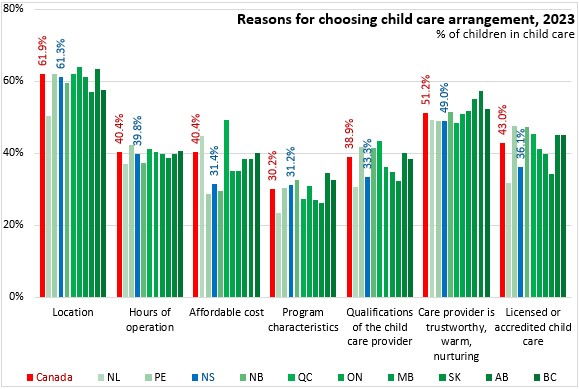
In Newfoundland and Labrador, there was a notably larger portion of respondents who chose their child care because it was the only option available.
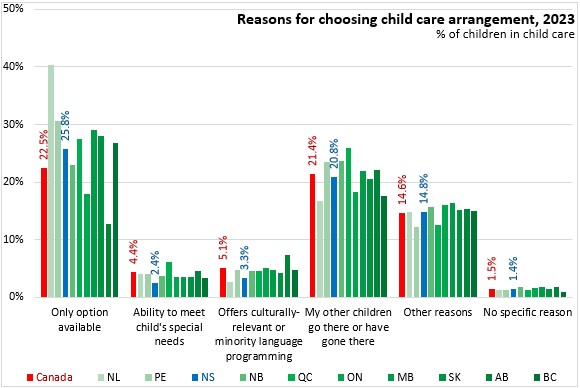
Among the respondents that have found child care arrangements in Nova Scotia, 52.3% reported difficulty in finding child care while 42.4 % had no difficulty in finding child care. Having difficulty in finding child care averaged 46.4% across Canada and ranged from low of 38.7% in Alberta to high of 67.2% in Newfoundland and Labrador.
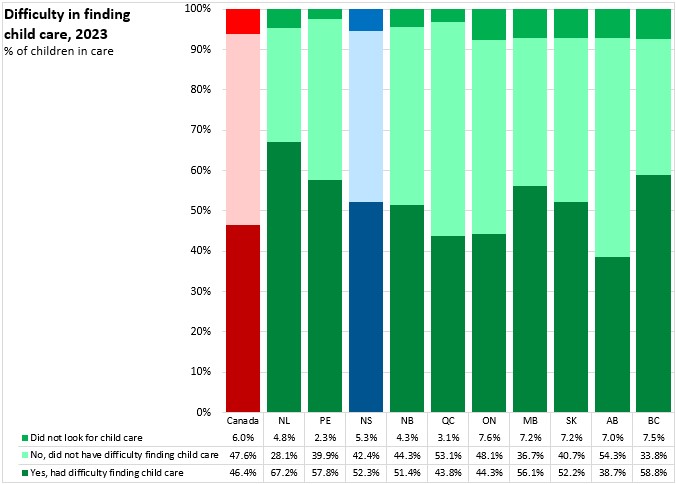
All provinces reported rising difficulty in finding child care. This was particularly acute in Newfoundland and Labrador.

In most provinces, the most common difficulties in finding child care were related to availability in the respondent's community, affordability, fitting work/study schedules, and finding licensed care. Difficulties related to finding child’s special needs, culturally relevant programming, subsidized child care, qualified providers, and accommodating multiple children were less common. Nova Scotia respondents noted higher difficulty in finding child care within community and fitting work/study schedules, but fewer difficulties in all other categories compared to the national respondents.
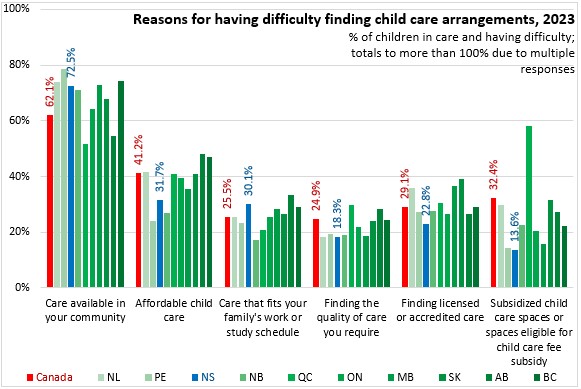
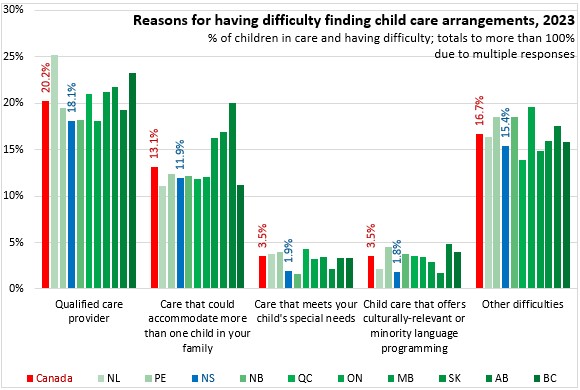
In Nova Scotia, the most common consequences related to difficulty in finding child care were multiple/temporary arrangements, working fewer hours, postponing return to work, changing work/study schedules and paying more than desired.
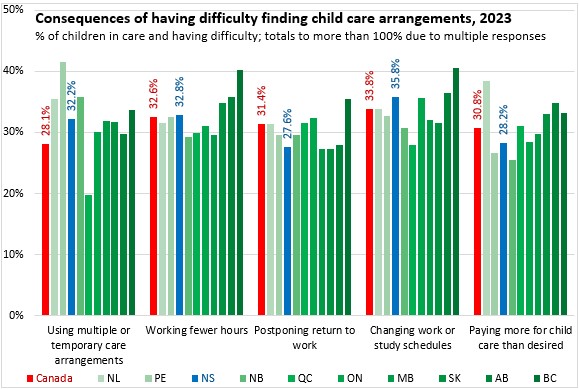
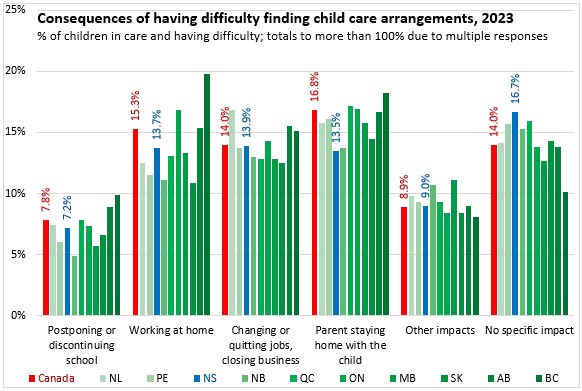
At the national level, the most common reasons for not using child care are related to: preference for having a parent stay at home with the child (particularly in prairie provinces and British Columbia) as well as parental leave.
In Nova Scotia, preference for having a parent stay home, parental leave and costs were the most common reasons for not looking for child care, though each reason was less prevalent than the national average. Shortages of child care spaces and children in school were the next most common reasons for which Nova Scotians reported not seeking child care, and these were above the national averages.
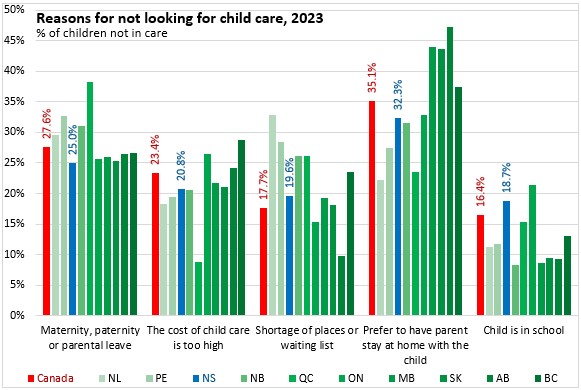
Unemployment was more widely cited as a reason for not seeking child care in Nova Scotia than in any other province (though this was not one of the top reasons why a family did not seek child care).
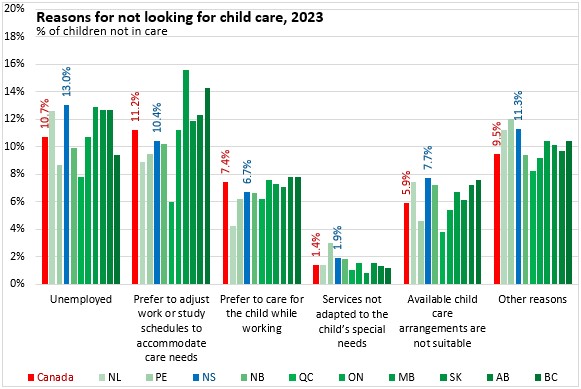
Note: Data for certain categories for some provinces is suppressed by Statistics Canada and does not show up in charts. The differences in provincial results may not be statistically significant.
Source: Statistics Canada. Table 42-10-0009-01 Consequences of having encountered difficulties in finding a child; Table 42-10-0031-01 Type of child care arrangement, children aged 0 to 5 years; Table 42-10-0010-01 Reasons for not using any child care arrangement, children aged 0 to 5 years; Table 42-10-0008-01 Type of difficulty encountered by parents and guardians in finding a child care arrangement, children aged 0 to 5 years; Table 42-10-0006-01 Parent and guardian reasons for using main child care arrangement, children aged 0 to 5 years; Table 42-10-0004-01 Use of early learning and child care arrangements, children aged 0 to 5 years; Table 42-10-0001-01 Difficulty for parents and guardians in finding a child care arrangement, children aged 0 to 5 years
<--- Return to Archive